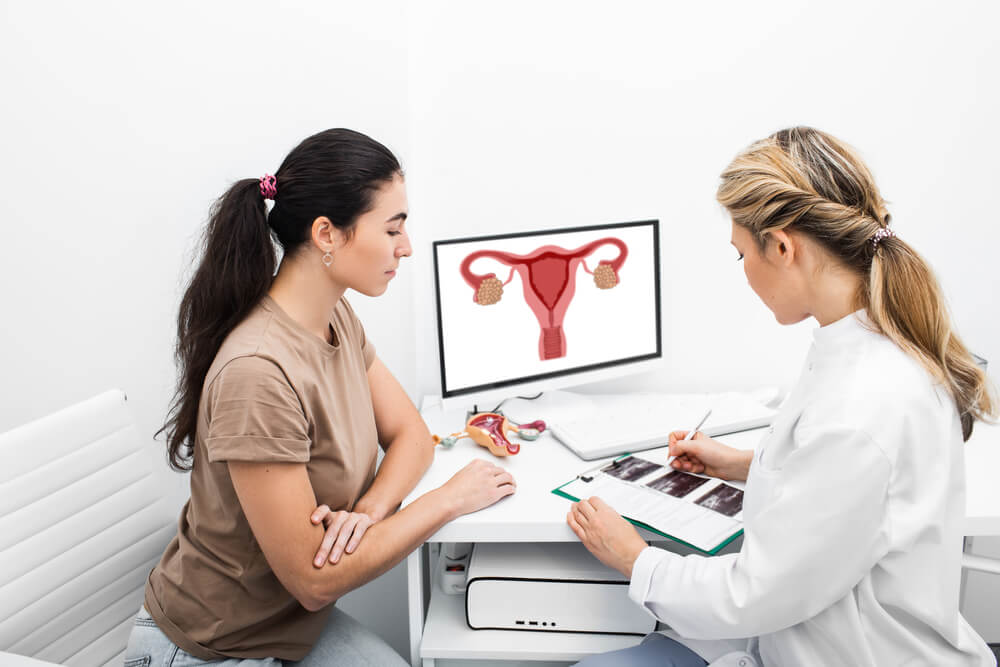Loop electrosurgical excision, or LEEP, is a procedure that can be used to test and treat abnormal cell growth on cervical surface tissue. The cervix is the opening between the uterus and vagina, and with the LEEP procedure, professionals heat a wire loop that can remove the abnormal structures. When the tissue is removed, it can be further examined for cervical dysplasia or precancerous cells. While the chances of cervical cancer after LEEP won’t change for the patient, it can help establish a timely diagnosis and early treatment for better outcomes.
In this article, our reproductive health specialists at Doral Beach Gynecology talk about the LEEP procedure, address the process of the procedure, talk about LEEP procedure success rates, and will also address recovery.
Loop Electrosurgical Excision
Following confirmation of abnormal cervical cells through a Pap smear or a colposcopy biopsy, your healthcare provider might suggest LEEP. Colposcopy is a noninvasive technique that employs a device resembling a microscope to amplify your cervical area, facilitating the identification of abnormal growth.
LEEP serves both diagnostic and therapeutic purposes, addressing cervical dysplasia as well as conditions such as genital warts and polyps.

Before LEEP
Before undergoing the procedure, your doctor will see whether performing the intervention is safe. For instance, patients with PID and cervicitis usually won’t be able to undergo LEEP. Also, patients may need to take a pregnancy test. If they are pregnant, their provider will determine the right timing for the procedure. Typically, the procedure will be scheduled at a time when patients aren’t menstruating.
Also, experts will advise the following preparations:
- Refraining from using douches, vaginal creams, and sex at least a day before the procedure.
- Packing a pad before you leave for LEEP so you can handle any heavy discharge after the procedure.
- Size taking meds that affect blood clotting, like aspirin or anticoagulants.
- Take a pain reliever before the procedure.
During LEEP
Loop electrosurgical excision may be performed in a hospital, at the gynecologist’s office, or as an outpatient procedure.
On that note, the procedure resembles a pelvic exam, during which patients will lie on their back and have their feet in stirrups. Then, your provider will use the speculum to widen the vagina to have better access to the cervix. Then, the doctor will put a colposcope near the vaginal opening that will provide a magnified view of the cervix.
Then the LEEP procedure begins:
- The provider will numb the cervix with a lidocaine injection.
- Once the cervix becomes numb, the expert will insert the electrically charged loop.
- Next, the provider will remove the thin layers of surface tissue and remove any abnormal structures. Usually, some tissue will be sent for labs to be tested for cancer.
- Once all this is done, the provider will apply medical paste to the treated area to prevent any bleeding.
Generally, the procedure takes no longer than 20 minutes, and patients are able to return home whenever they feel up to it.
And while the procedure shouldn’t feel painful, some patients may feel a slight pinch during the lidocaine injection. During the procedure, it’s normal to feel slight discomfort or internal pressure as the cells are being removed.
After LEEP
After the LEEP procedure, some patients may feel lightheaded. After that, they are free to go home. Usually, rest takes less than 30 minutes, and patients will receive detailed aftercare instructions to speed up their LEEP procedure recovery.
Benefits and Risks
Typically, LEEP is safe with very rare complications. Normally, infection and bleeding may happen as a complication, just as with every other type of surgery. In some cases, a larger area of tissue needs to be removed, which means that more procedures might be required. Several procedures may weaken the cervix, which may lead to premature birth during pregnancy in rare cases.
On the other hand, LEEP stands as a secure and efficient method for the prevention of cervical cancer. Its success rate is highly commendable, boasting a 90% cure rate. The outcome of a LEEP procedure hinges on several factors, including the extent of your cervical dysplasia and the amount of tissue necessitating removal. In cases where abnormal cells reappear, your healthcare provider may advise further LEEP procedures or alternative treatments.

LEEP Procedure Recovery
As mentioned above, following the intervention, patients will usually feel fatigued. It is pivotal that they get enough rest on the day of the procedure and follow their provider’s guidelines on aftercare.
During recovery, patients can expect the following:
- Mild cramping for a few days after the procedure. The cramps might require OTC medications to manage the discomfort.
- Vaginal drainage and spotting for a few weeks. The medication past that stops the bleeding will produce vaginal discharge right after the intervention, which may have an unpleasant odor. This discharge may be greenish-yellow or brownish-black.
- Having undergone LEEP shouldn’t disrupt your cycle.
- You should avoid being excessively active for two days after the procedure and typically restrict exercise for a minimum of one week. After, if you notice any bleeding during exercise unrelated to menstruation, stop what you doing, and give your body more time to rest and heal.
- You may shower normally but refrain from taking baths until your doctor says they’re safe.
- Also, refrain from sexual intercourse for at least four weeks. Also, avoid inserting sex toys and tampons.
Still, you need to understand that LEEP is a treatment form and a diagnostic tool. Removing the surface tissue treats cervical dysplasia as it eliminates the abnormal cells.
Still, in other cases, more interventions may be required; in other cases, experts will recommend more treatments if the abnormal cells start to form again.
In more severe cases, experts may recommend a hysterectomy (the removal of the complete uterus) if the cervical dysplasia is more advanced and several LEEP procedures (along with other treatments) haven’t stopped the recurring abnormal cell growth.
Expert and Compassionate Help
Experiencing nervousness or apprehension about undergoing a LEEP procedure is entirely common. It’s essential to keep in mind that your cervix will be numbed throughout the procedure, so the primary discomfort you may encounter is typically associated with the anesthesia injection. For numerous individuals, the reassurance provided by a LEEP outweighs the brief period, typically lasting ten to twenty minutes, spent on the examination table. A LEEP serves the dual purpose of confirming that abnormal Pap results are not indicative of cancer and, if cancerous cell changes are present, assisting in both diagnosis and treatment by eliminating the abnormal tissue.
We understand if you have concerns both regarding the procedure and abnormal cell growth. Our team of dedicated and compassionate experts is here to answer all your questions and concerns. Schedule an appointment with us if you would like to learn more about the procedure or other problems pertaining to the female reproductive system. We are here to help.


